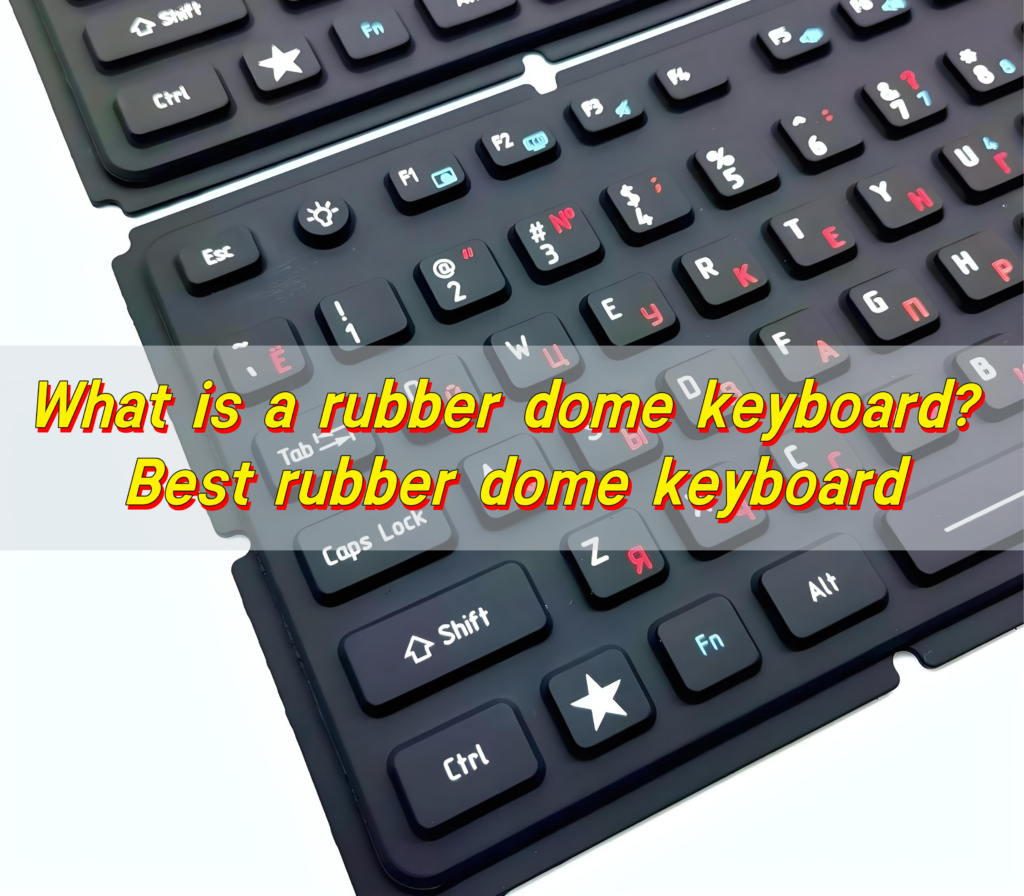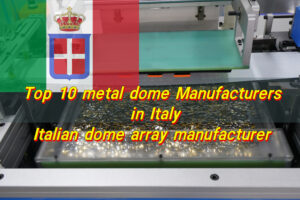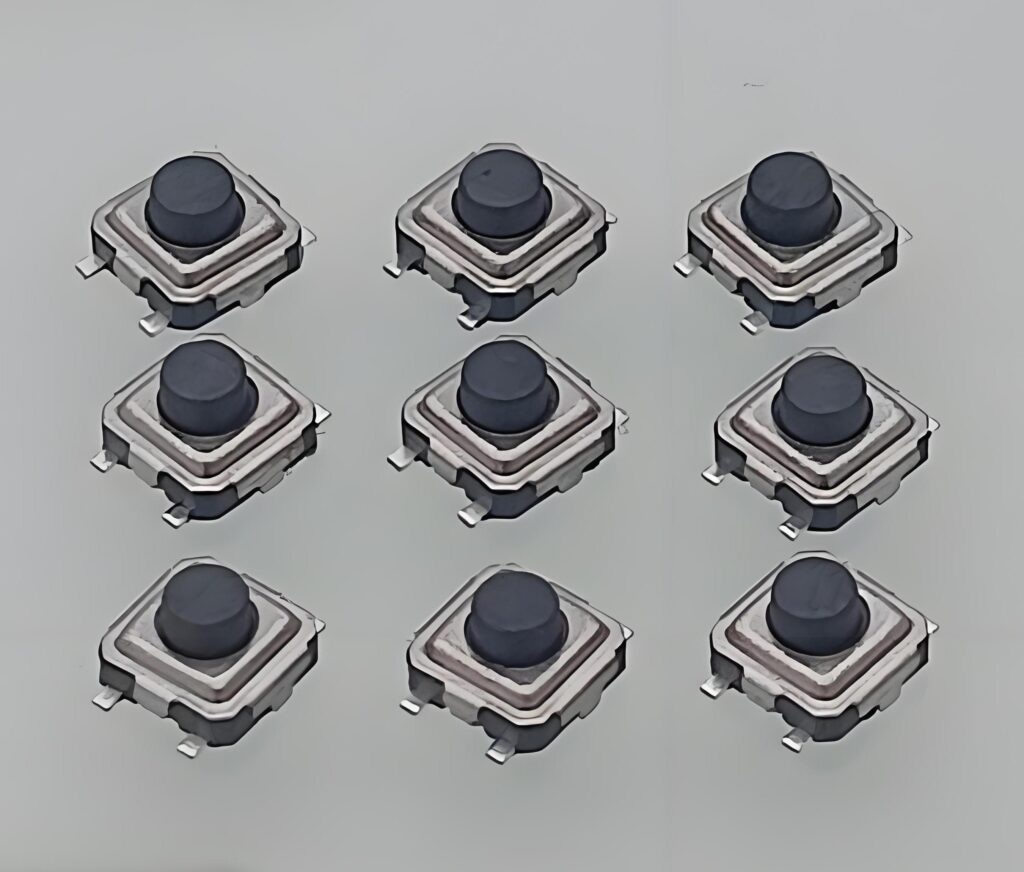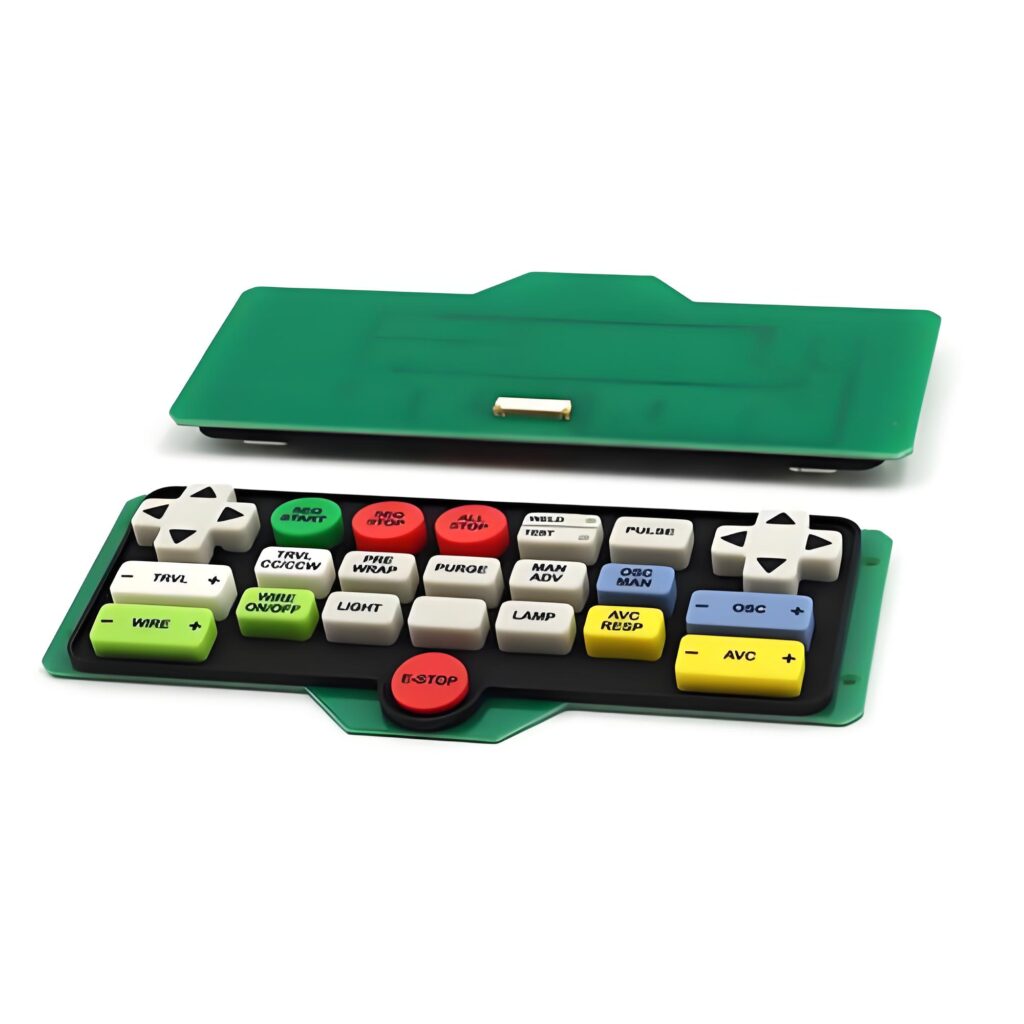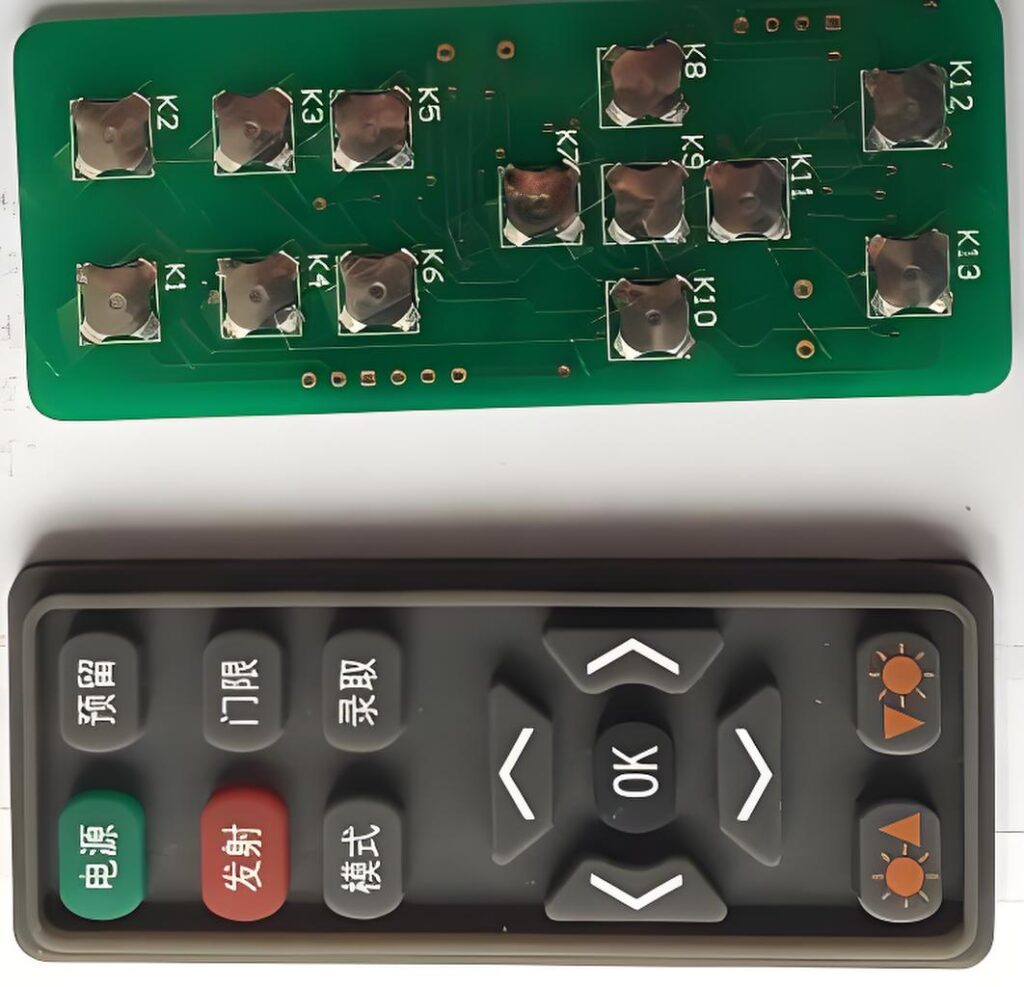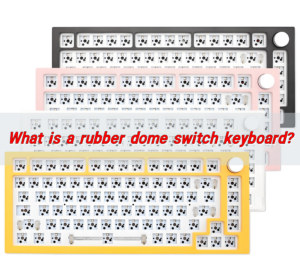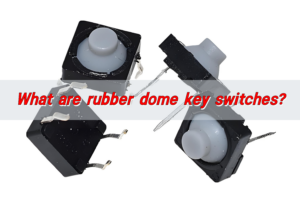Rubber dome keyboard is a switch element that combines conductive rubber and metal dome into one: when pressed, the rubber shell first cushions the fingertips, and the metal dome inside instantly sinks and contacts the circuit, which not only brings a crisp touch but also ensures a rebound life of millions of times; after releasing the hand, the rubber rebounds and seals, and water vapor and dust cannot enter.
What is rubber dome keyboard?
At its core, a rubber dome keyboard is a pressure-based switch array. Each switch consists of three main parts:
A rubber overlay that acts as a cushion.
A metal dome underneath that provides the tactile snap.
A circuit layer that completes the signal when pressed.
When a user presses the surface, the rubber compresses and pushes the metal dome downwards, which in turn touches the circuit and sends the signal. Once released, the rubber rebounds, allowing the dome to return to its original position.
Unlike standard membrane keyboards, the addition of the metal dome creates an unmistakable “snap” sensation, offering more feedback and better user experience.
Are rubber dome keyboards good for gaming?
If your application involves gaming consoles, remote controls, or custom gaming panels.
The answer is: Yes—especially for specific functions. These keyboards deliver a satisfying tactile press and are quieter than traditional mechanical switches.
Are rubber dome keyboards tactile?
The tactile feel of a rubber dome keyboard comes directly from the metal dome beneath the rubber top. It delivers a crisp response when activated.
From elevator panels to remote keypads, users rely on that snap feel to know their input was registered.
Unlike membrane-only switches that feel mushy, rubber dome keyboard switches give a well-balanced, responsive click—without the clack of mechanical parts.
How to clean a rubber dome keyboard?
Dirt, oils, and debris can slowly creep into any switch over time, especially when used in high-contact environments. Cleaning your rubber dome switch keyboard is important for maintaining longevity and performance.
Here’s a safe and easy way to do it:
- Power off and disconnect the device.
- Use a soft brush or compressed air to remove surface dust.
- Dampen a microfiber cloth with isopropyl alcohol (not acetone).
- Gently wipe the surface of the rubber domes and housing.
- Avoid soaking the rubber or getting alcohol into the circuitry.
- Let everything dry completely before reconnecting.
With gentle cleaning every few months, your keyboard rubber dome will stay responsive and look brand new.
Can I use acetone to clean my rubber dome keyboard?
No—never use acetone. Acetone is too harsh for both rubber and plastic components. It can cause discoloration, cracking, and even melt parts of the keyboard.
Instead, always use isopropyl alcohol (70%-90%), which is much safer. It evaporates quickly and doesn’t harm the rubber or metal dome components. Just a light touch with a cloth is enough to refresh the surface without damaging the internal structure.
How do rubber dome keyboards work?
When you press a key, here’s what happens:
- The rubber top layer deforms under pressure.
- This pushes down the metal dome, which collapses inward.
- The dome makes contact with the conductive traces on the circuit below.
- This completes the electrical circuit, sending a signal.
- As the finger lifts, the dome springs back, and the rubber restores its original shape.
This press-and-release action is quick, responsive, and reliable. The metal dome ensures accuracy, while the rubber pad softens the impact for your fingers.
How long do rubber dome keyboards last?
The lifespan of a rubber dome keyboard depends on usage, design, and environment. But on average, a quality rubber dome switch can handle between 1 to 5 million actuations.
Manufacturers like Best Technology have enhanced dome structure and improved rubber resilience to stretch life cycles up to 10 million presses in specialized models.
Compared to traditional membrane switches, which often degrade after 1 million presses, the rubber dome mechanical keyboard offers better longevity while still being budget-friendly.
How loud are rubber dome keyboards?
One of the most appreciated features of rubber dome switches is their quietness. Thanks to the rubber overlay, each keypress feels soft and muted.
The metal dome inside gives tactile feedback, but the sound remains low. This is especially useful in environments where noise reduction is critical—such as hospitals, offices, or consumer electronics.
Compared to clicky mechanical switches, rubber dome keyboards are up to 50% quieter, making them ideal for both public spaces and personal devices.
How to distinguish rubber dome vs mechanical keyboard?
While the external appearance might be similar, internally they are very different.
- Tactile Feel: Rubber domes feel softer and more cushioned. Mechanical switches are stiffer and more clicky.
- Noise: Rubber dome switches are quieter. Mechanical ones produce a sharper sound.
- Structure: Mechanical switches have springs and physical moving parts. Rubber dome switches rely on pressure and rebound.
- Lifespan: Mechanical can last up to 50 million presses, but premium rubber domes also offer long life with lower cost.
- Application: Mechanical keyboards are used for PCs. Rubber domes are more common in custom control interfaces, remotes, and embedded systems.
Conclusion:
Rubber dome keyboard isn’t your traditional typing tool. It’s a well-engineered combination of rubber and metal dome switches, designed for reliability, quiet operation, and strong tactile feedback.
Whether used in gaming controls, industrial panels, or remote keypads, its soft touch and sharp response make it a top choice. It’s affordable, quiet, easy to clean, and lasts for millions of presses.
Need help choosing the best rubber dome solution? Contact our experts at sales@metal-domes.com


